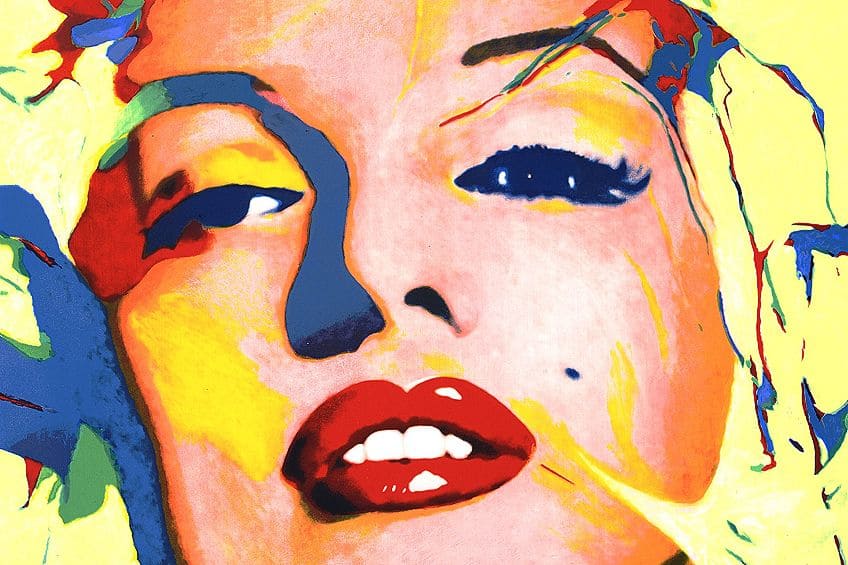Art Movement Pop Art - The Pop Art movement was a significant artistic revolution in the 1950s and 60s that emerged in the United States and United Kingdom. It was predominantly characterized by the use of commercial and mass-produced consumer goods such as cans, bottles, and comic strips as art. Also known as the visual art approach to the culture of popular mass media, Pop Art aimed to break down the barriers between high culture and low culture, challenging the traditional notions of "good" and "bad" art.
Pop Art: A History and Analysis of the Brightly Colored Pop Art Movement
Pop Art in the United States and United Kingdom

The Pop Art movement commenced in the US in the late 1950s under the influence of artists like Jasper Johns and Robert Rauschenberg. It gained momentum in the 1960s with artists such as Roy Lichtenstein, Andy Warhol, and Claes Oldenburg becoming prominent figures. Pop Art was not just confined to the US as it spread to the UK during the early 60s with a new generation of artists like Richard Hamilton and David Hockney.
Pop Art Movement in the US - Artist.com
Implications of Pop Art
 The Pop Art movement brought with it significant implications that still resonate in the contemporary world. Firstly, it was a response to the then ongoing Cold War, and as such was a reflection of the culture of consumption in post-World War II era. This led to the art movement becoming a commentary on the realities of a capitalist world while celebrating the aesthetic of mass culture.
The Pop Art movement brought with it significant implications that still resonate in the contemporary world. Firstly, it was a response to the then ongoing Cold War, and as such was a reflection of the culture of consumption in post-World War II era. This led to the art movement becoming a commentary on the realities of a capitalist world while celebrating the aesthetic of mass culture.
The Role of Technology
 The Pop Art movement in the United States captured the spirit of the moment with its embrace of contemporary technology like silkscreen printing, which blurs the line between art and commercial production. Pop artists also incorporated the techniques of advertising and graphic design into their work, creating art that was brimming with energy and vibrancy.
The Pop Art movement in the United States captured the spirit of the moment with its embrace of contemporary technology like silkscreen printing, which blurs the line between art and commercial production. Pop artists also incorporated the techniques of advertising and graphic design into their work, creating art that was brimming with energy and vibrancy.
The Pop Art Movement in the US - Artist.com
How to Recognize Pop Art
Pop Art is characterized by its bold use of color, often incorporating bright primary colors like red, blue, and yellow. It also features recognizable imagery from popular culture like comic strips, advertisements, and everyday objects. Pop Art often incorporates repetition of imagery and strong graphic elements, creating a sense of movement and dynamism.
How to Create Pop Art

If you're interested in creating Pop Art yourself, there are some things to keep in mind. Firstly, try to incorporate recognisable imagery from popular culture, such as advertisements or comic book panels. It's also important to use bright, bold colors, and to experiment with repetition and graphic design techniques. Silkscreen printing is a technique frequently used in creating Pop Art, so consider experimenting with that as well.
To truly capture the spirit of Pop Art, it's essential to draw inspiration from the world around you. Pop Art is an art movement that celebrates mass culture, and as such, it's important to stay in tune with cultural developments and changes. Remember, the essence of Pop Art is to create art that blurs the line between high culture and low culture, so embrace the ordinary and make it extraordinary. In conclusion, Pop Art had a significant impact on the art world of the 20th century and continues to have relevance in the 21st century. Whether you're an artist or simply an art enthusiast, there's much to appreciate and learn from the Pop Art movement. From vibrant, bold colors to a celebration of mass culture, Pop Art is an art movement that will continue to inspire for generations to come. So, embrace your inner rebel and color addict, and unleash your creative potential in the spirit of Pop Art.View more articles about Art Movement Pop Art